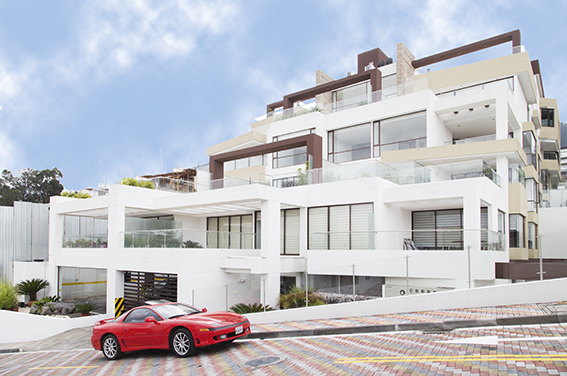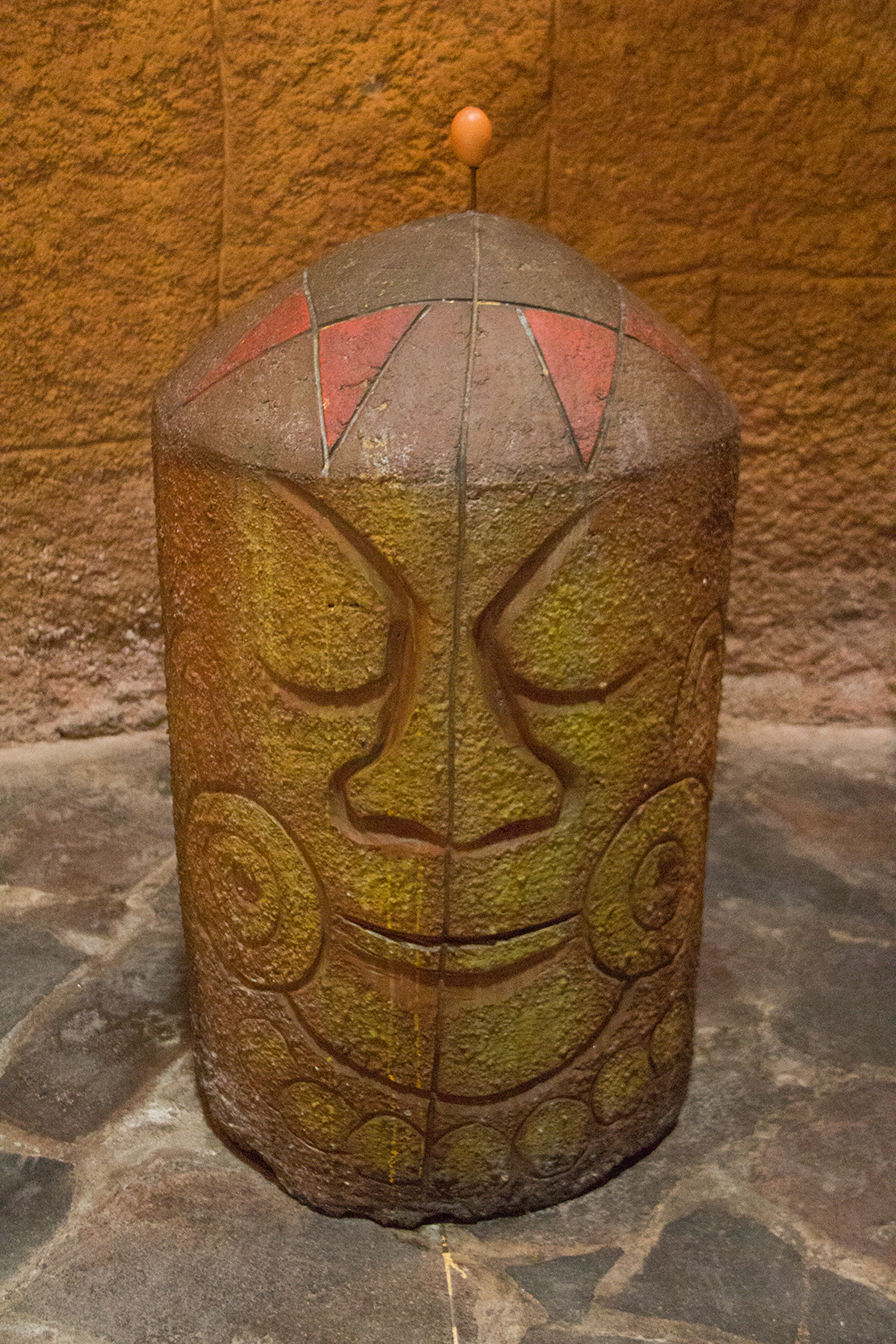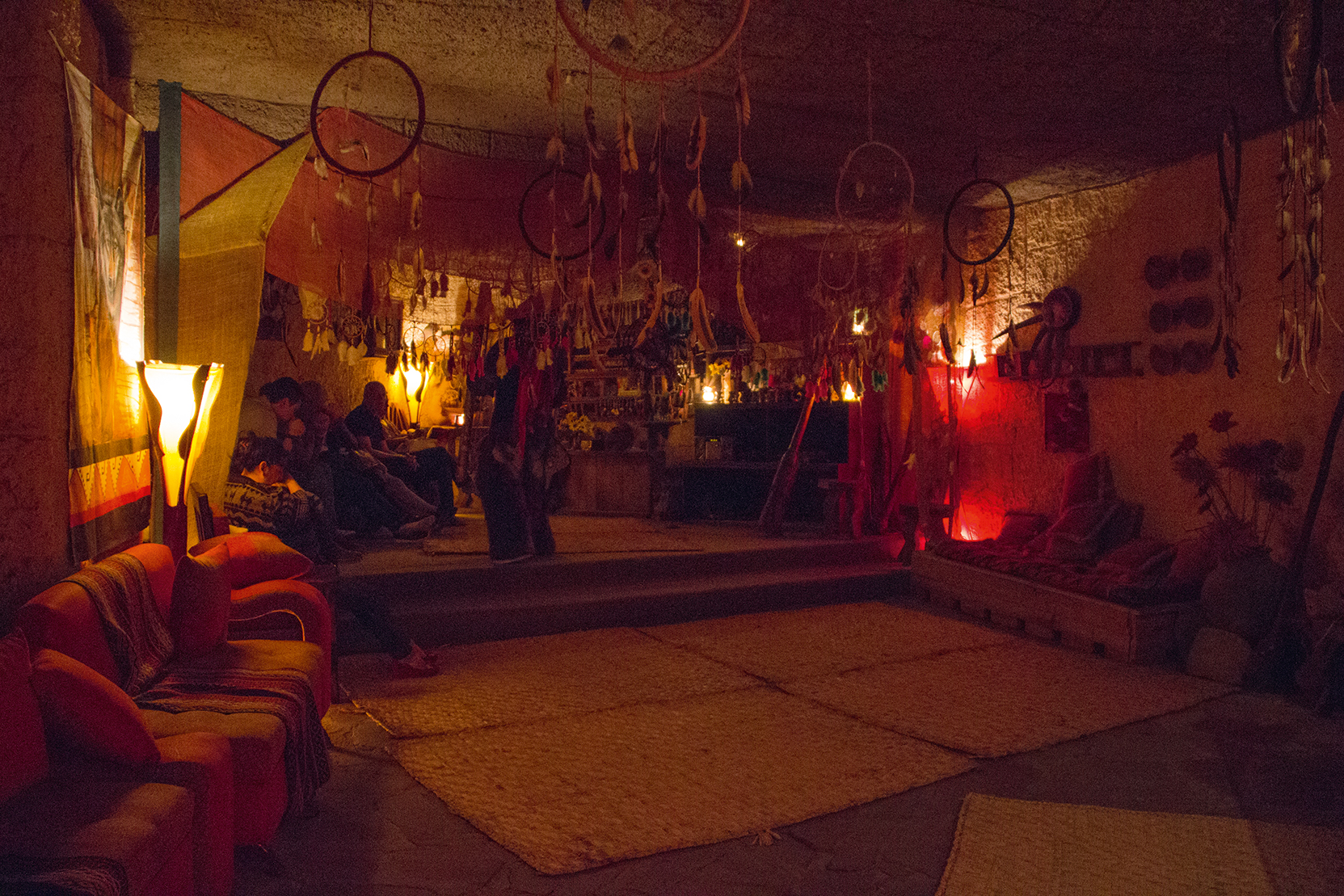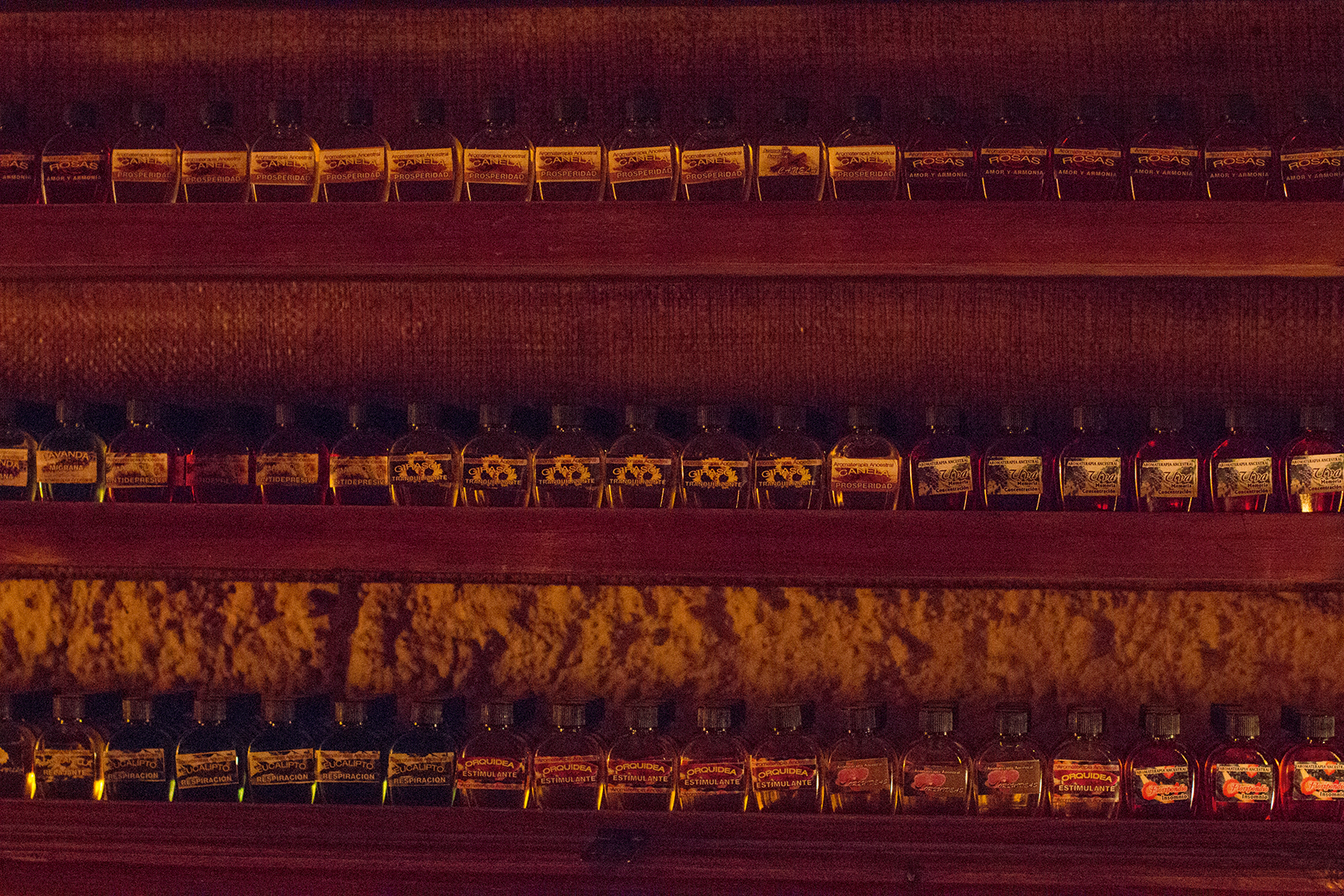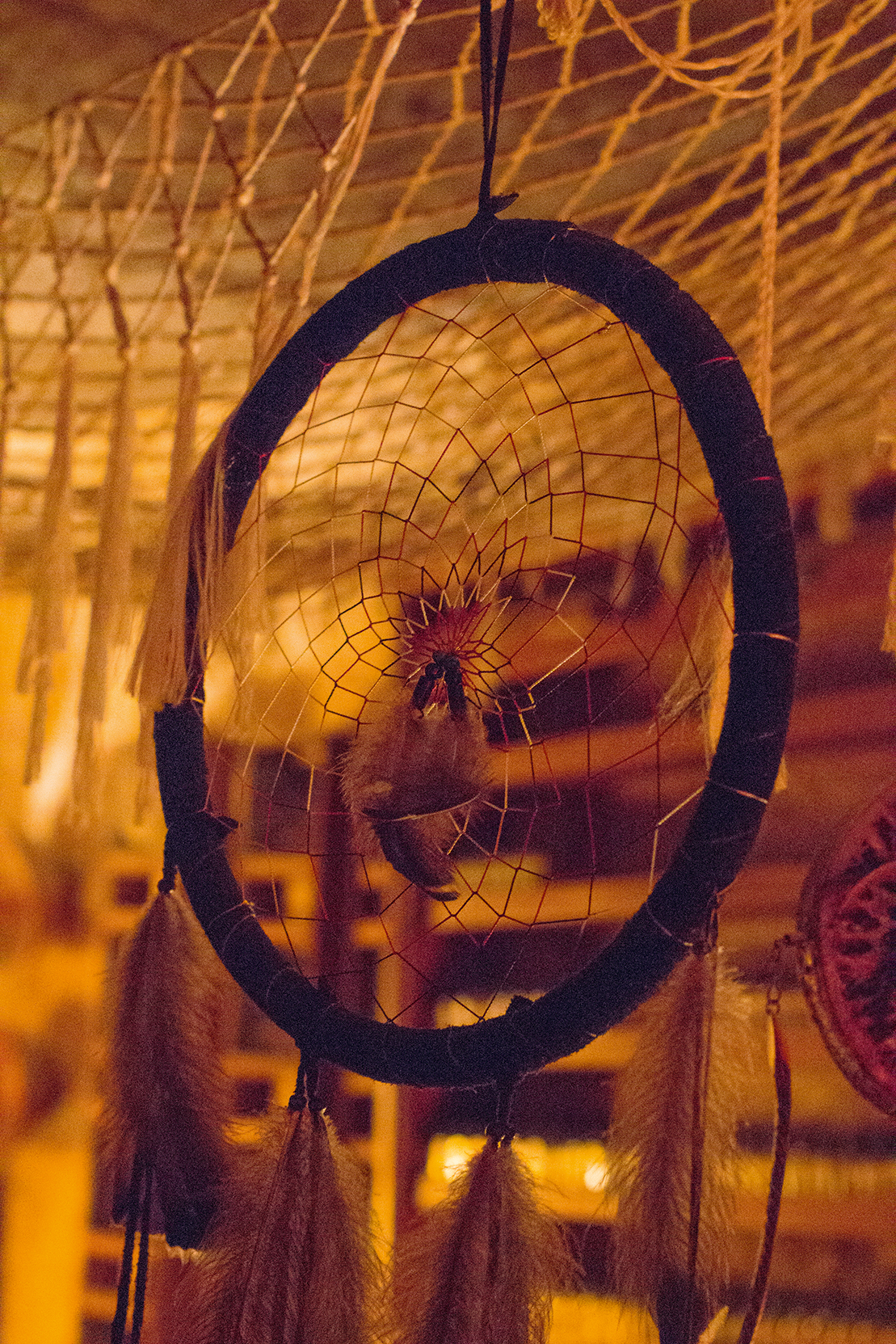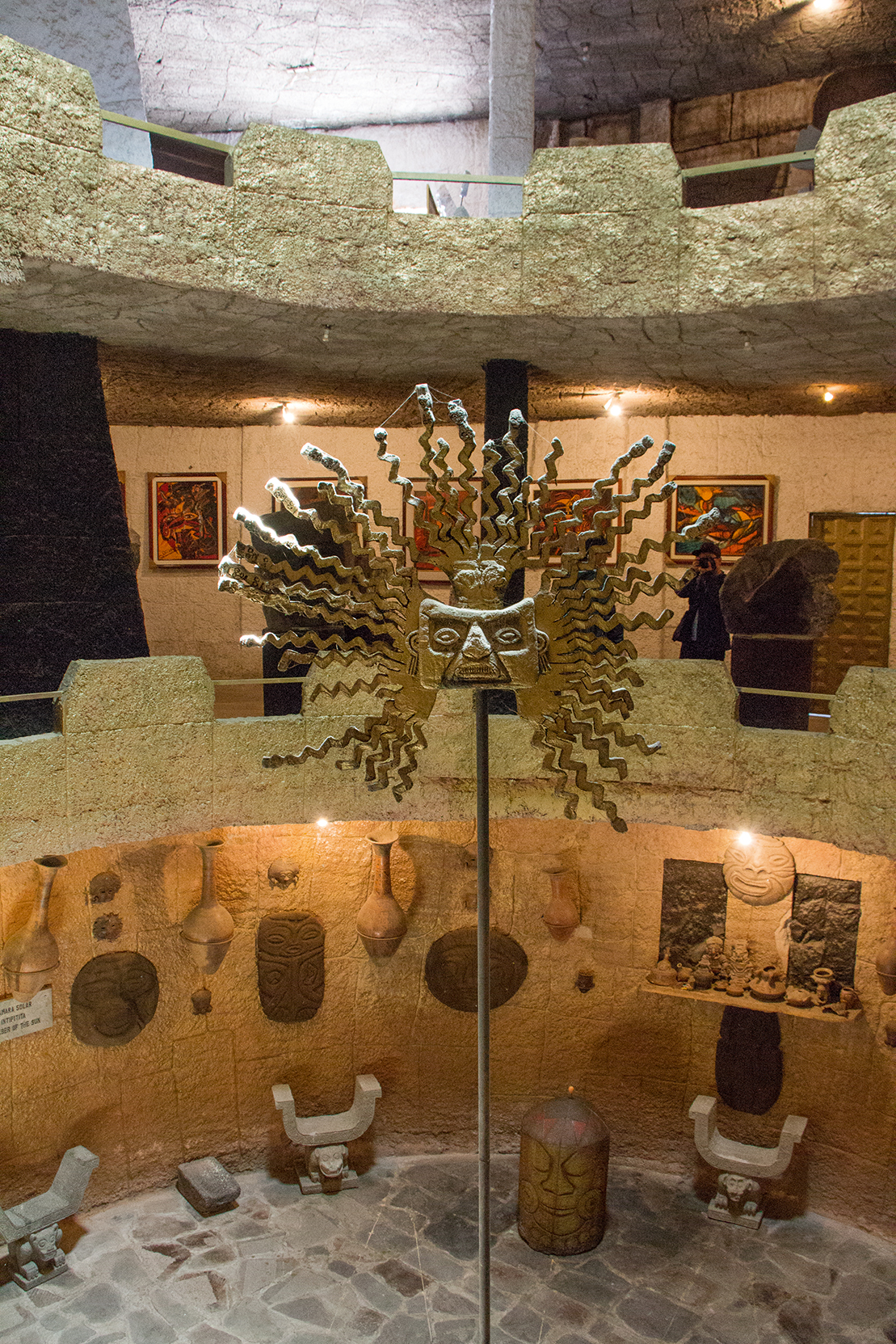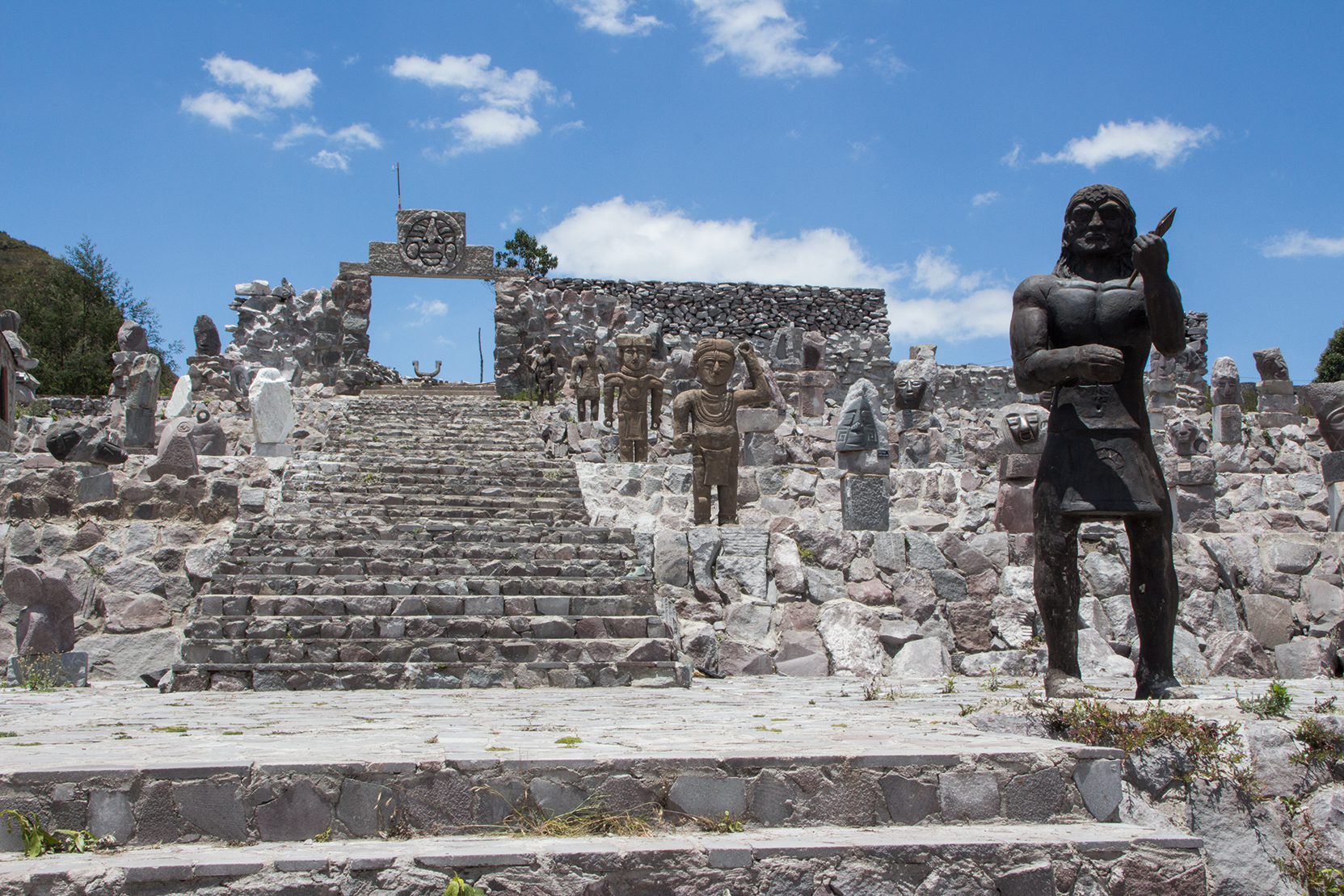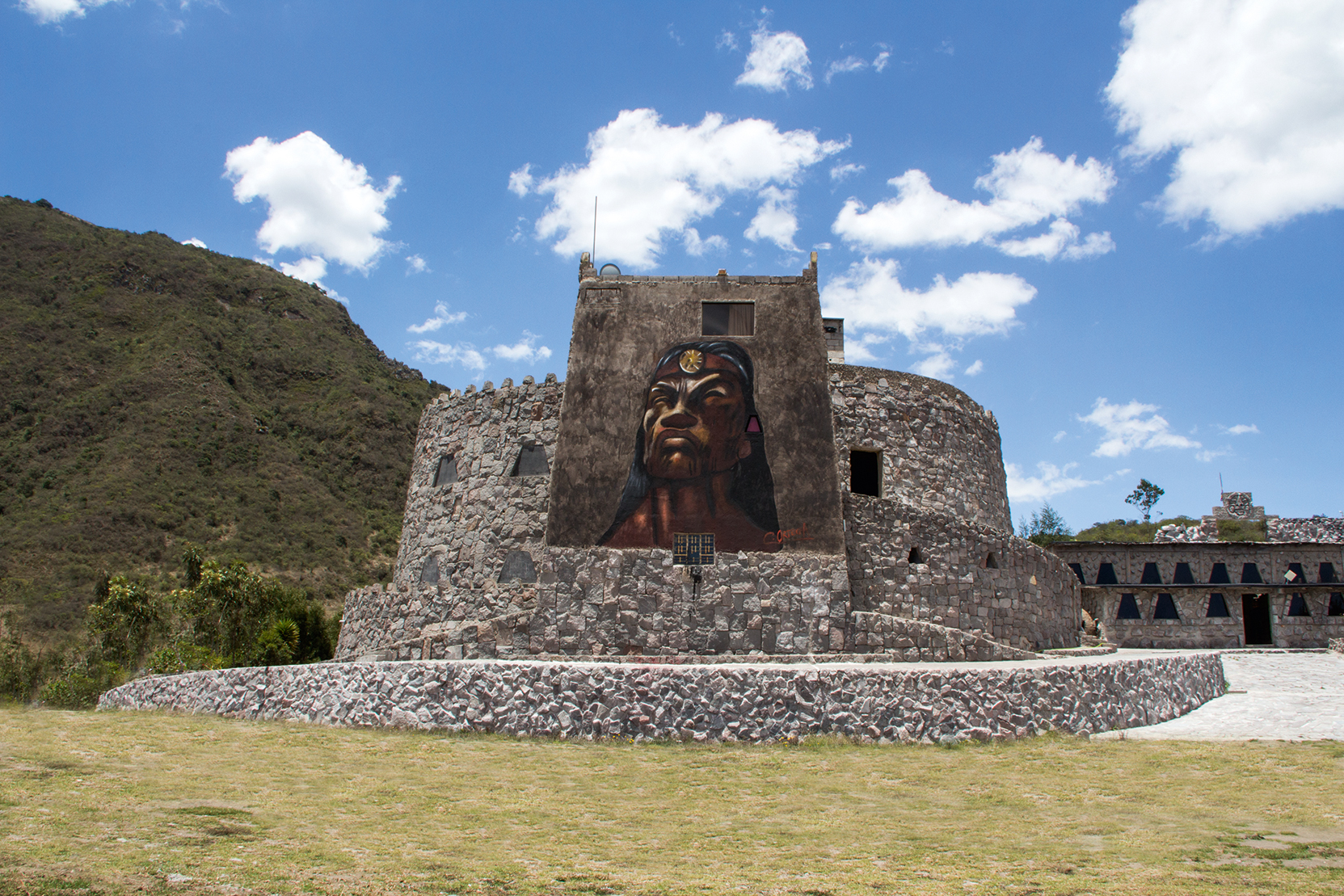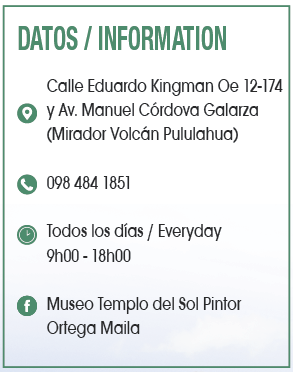Even though the Equator is one of Quito`s most frequently visited spots, it´s a destination that offers much more than just the standard monument and the opportunity to stand directly above the equator, with one foot in each hemisphere. Anybody traveling nearby should not miss the opportunity to visit the Ortega Malia Temple of the Sun Museum.
Driving away from Quito on the road to Calacalí, the entrance to the Pululahua Geobotanical Reserve shows up on the right hand side. From the parking lot on the lookout, you can look down upon a structure that resembles a castle, with an imposing entrance framed in stone. A sun hangs from its middle.
From afar, you can appreciate some long tall steps in the shape of a pyramid. Along its flanks, grandiose sculptures of human beings and animals carved in stone. As you approach, the scale become real and the carved stone figures outshine the gate that shelters them.
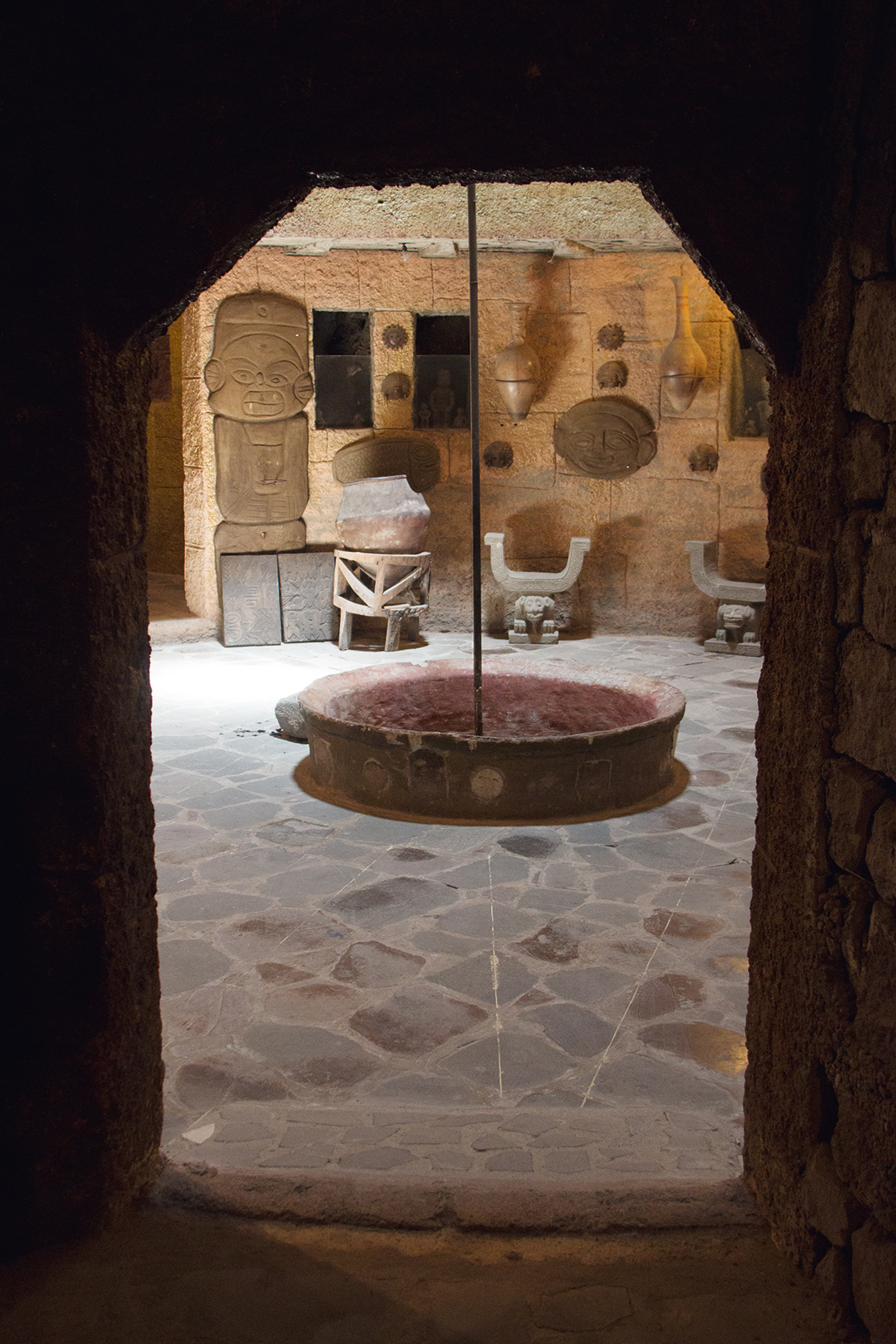
The Temple of the Sun Museum merges two concepts, in perfect harmony. It´s a temple that reveres the Sun and the ancient culture that is a legacy from our ancestors. At the same time, it´s also a museum, an art repository for the paintings of its sponsor. Both the idea and the actual construction came from the renowned artist Cristóbal Ortega Maila, a Quito painter who has become internationally known for his technique: his own hands are the principal tools for his paintings.
Entrance fee includes a guide. The tour begins in the central part of the main structure. Next, a dark passage whose end is invisible. The absence of light and the stone walls engender a feeling of coldness. The darkness, plus the ambient sounds, feed our curiosity.
Upon leaving that narrow passage, we can look up and notice that the structure has three floors. The first contains the legacy of Ecuador´s ancestors whose lives were closely guided by the Sun, which determined, not only the proper times to sow and to harvest, but also marked the changing seasons, the equinox and the solstice.
In the middle, stands a disproportionately large clay pot. A tall thin column emerges above the clay pot and almost obliges us to look up to ascertain what stands at its top. At the other end, a replica of the Mask of the Sun occupies the empty circular space that joins the three floors. It seems to be trying to join a similar mask that shines from the other circle that is symmetrically placed on the structure´s roof.
Our guide explains the motives behind the museum, as well as the Sun´s important role in ancient civilizations. Another subject is the presence of magnetic forces in this place, located precisely in the middle of the globe.
The tour continues. We enter a room with faint lighting. Immediately we can feel a relaxed mood. Here are “sleep catchers” of all shapes and colors, musical instruments that reproduce the sounds of animals or natural rhythms such as rain or wind. There is also a wide variety of natural oils, each with its particular purpose.
Our guide requests that we open our hands. Then he pours a few drops of oil on our extended hands. We close our eyes and bring our hands close to our nose. The scent of oil leads us into a state of quiet calm. Musical sounds transport us to an imaginary place full of birds, water and wind. The experience becomes a therapy.
The tour restarts. The first floor is an homage to the Temple of the Sun and, although the Mask of the Sun is present in all three floors, only when arriving at the second and third floors does the structure become a museum that salutes art. These floors are dedicated to Ortega´s works. We stroll around, admiring the beauty of the paintings hanging from the walls and stepping aside the enormous sculptures that seem to have a life of their own. In the middle, we are struck by the empty space that joins the three floors, bathed in natural light flowing from the circular opening in the roof, merging the temple and museum areas.
Outdoor spaces are ample. Stone sculptures and huge steps carry us back in time. If the skies are clear, visitors can see Quito´s northern neighborhoods from the temple´s rear area, the perfect spot to end this tour.

